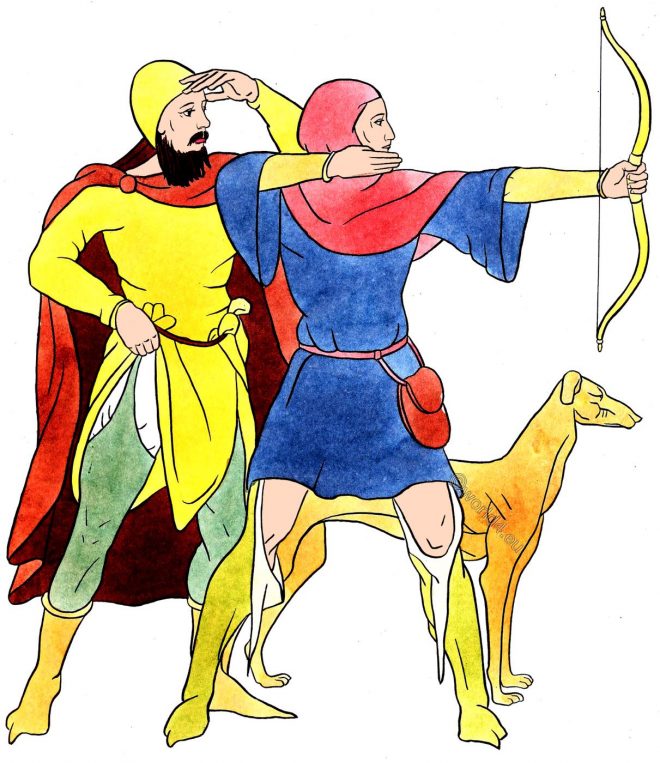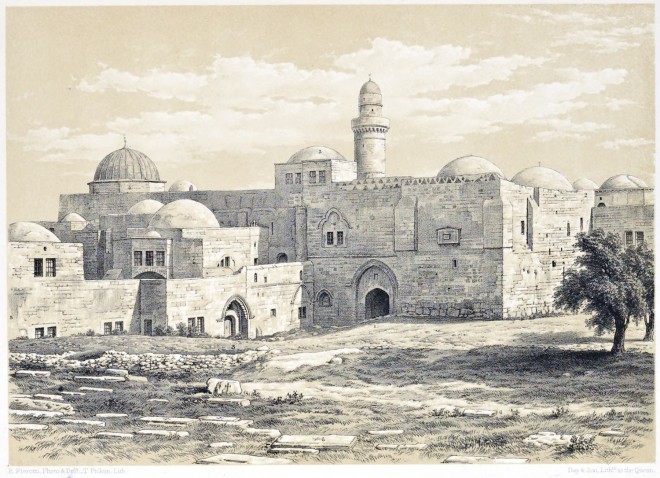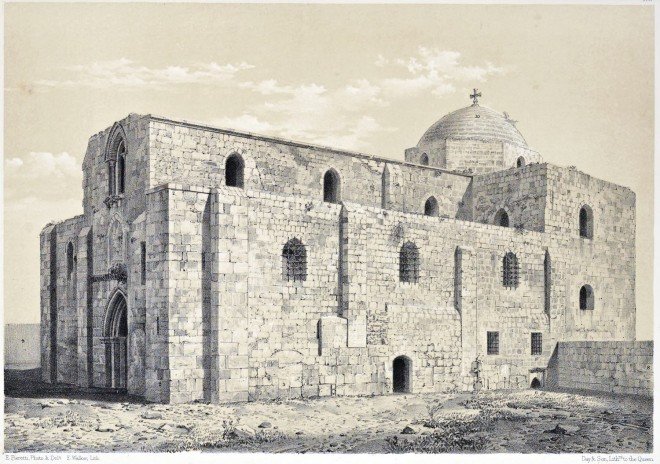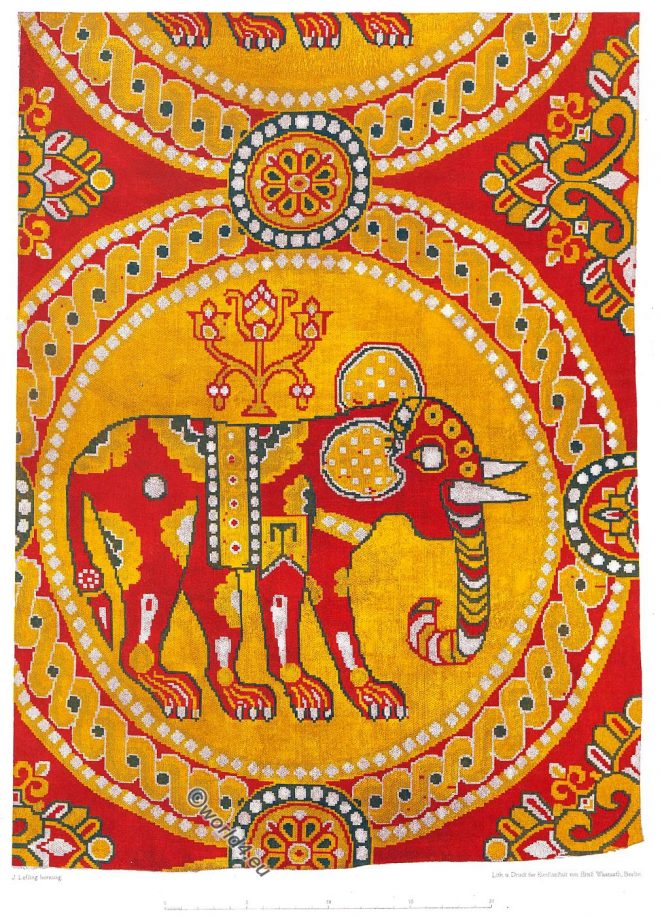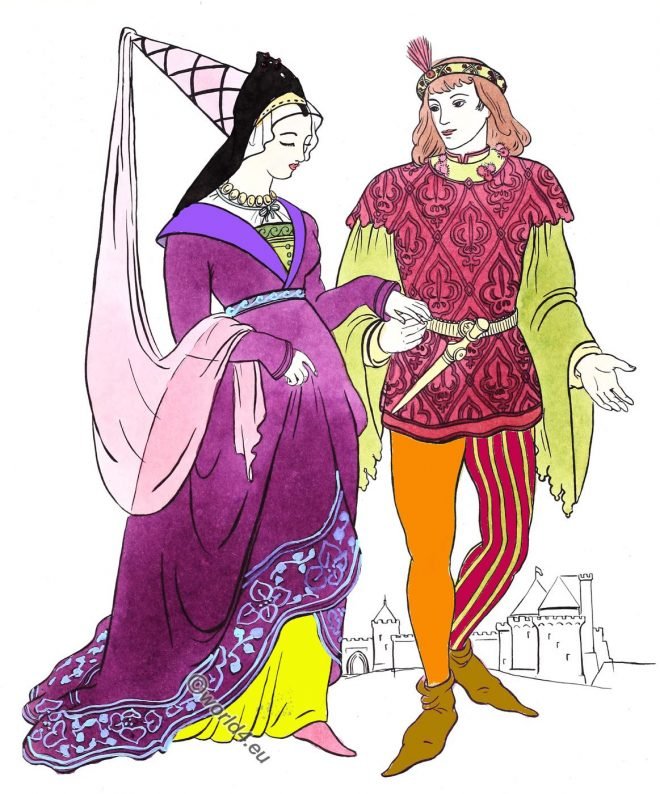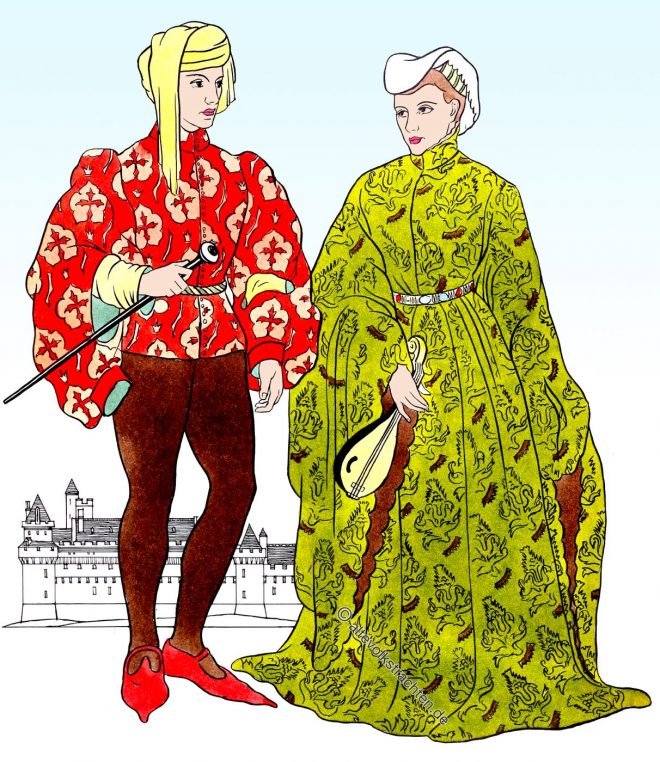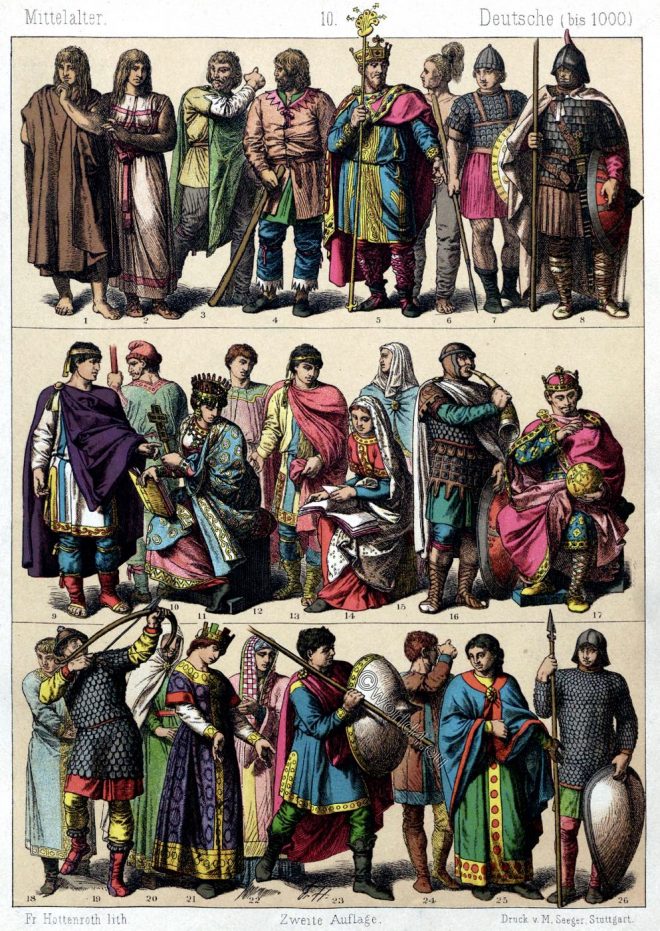Costumes 1000 to 1300 A.D. The two men in this picture might very well be, from the manner in which they are dressed, members of Robin Hood’s band.
Category: Middle Ages
Middle Ages costumes and fashion. Period between 700 to 15th century. Style of Byzantine, Carolingian, Romanesque, Gothic and Renaissance.
The Cenacle and the Tomb of David of Mount Sion at Jerusalem.
View, plan and section of the Cenacle (Coenaculum); of the so-called tomb of David; and of the underground works of Mount Sion.
View of the Church of S. Anne in the Old City of Jerusalem.
View of the Church of S. Anne. Plans and sections. Interior and four details of ornamentation.
Byzantine silk fabric with elephants from the 8th to 10th century.
Silk fabric. Background red pattern opposite. Large circles with elephants. The pattern is a Byzantine redesign of an originally Sassanid pattern.
Cotehardie, Houppelande and Hennin. Fashion of the late 14th century.
The two people in this plate lived very late in the 14th Century and were probably young fashionables who were up to the minute in their styles.
Byzantium. Costumes of the Eastern Roman emperor and empress.
History of Costume. Byzantium. 400 – 1100 AD. Costumes of the Eastern Roman emperor and empress.
Cotehardie and houpelande in the 15th century. Middle Ages.
The cotehardie has adopted its main characteristics from the houppelande. The doublet or gipon. Fashion history. Burgundy 15th century.
German clothing up to the 10th c.. Goths, Lombards, Merovingians.
German people in the dress at the end of the 10th century. Lombard king. Merovingian Franks. Carolingian Franks. Clothing in the Middle Ages.
The ancient Jerusalem. Geographical and historical. The Holy Land.
The importance of Jerusalem to Israel and the world is due the fact that it became the seat of the chosen Temple of God.
Armament. War costumes from the 9th to 13th century in France.
Armament of the Middle Ages in France. Ring armour. Chain mail. War costumes from the 9th to 13th century.

